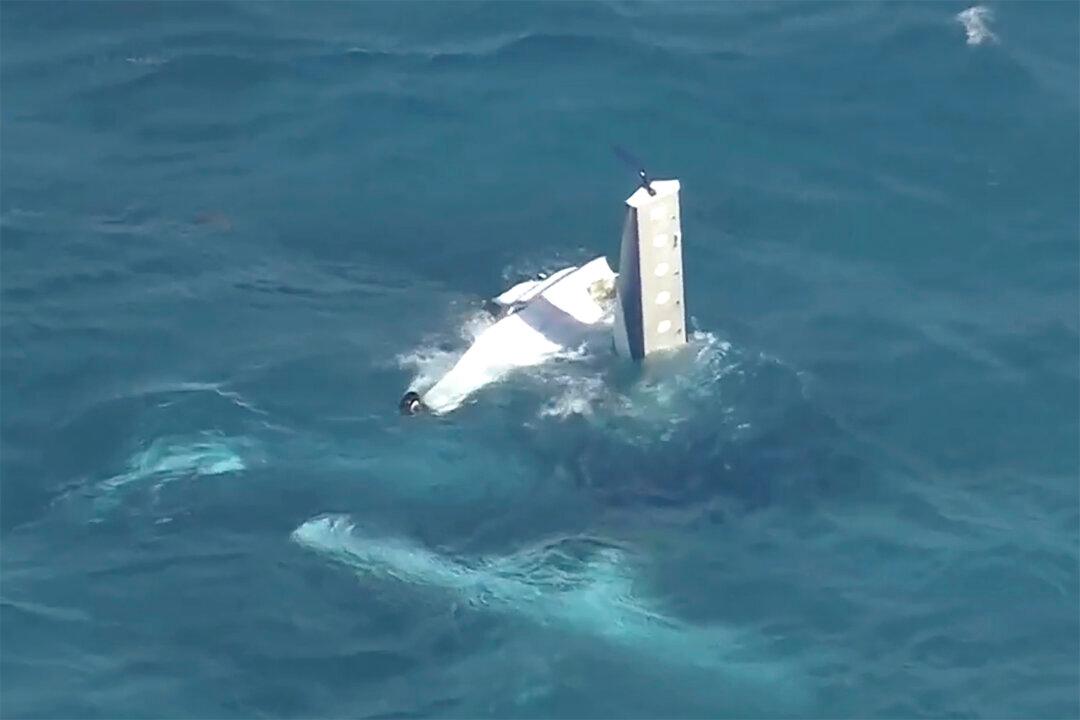
A fuselage in water off Rottnest Island, Australia, on Jan. 7, 2025, after a seaplane crashed. ABC/Channel 7/Channel 9 via AP
A tragic seaplane crash on Rottnest Island, Western Australia (WA), has claimed the lives of three people, confirmed WA Premier Roger Cook.
The plane, carrying seven passengers, crashed into the water shortly after taking off from Thomson Bay on Jan. 7 afternoon.





